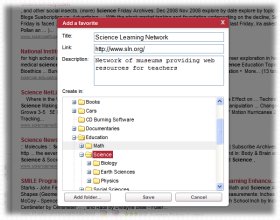|
Web
Education
Viewing 1-8 of 8 total results
Role-based Access Control vs Attribute-based Access ...
Attributes make ABAC a more fine-grained access control model than RBAC. RBAC vs ABAC . Let’s compare these two popular approaches — role-based access control vs attribute-based access control — to determine the pros and cons of each. RBAC pros and cons . RBAC is the most popular approach to restricting access....
Inheritance Properties of Role Hierarchies
explores some interesting characteristics of role hierarchies and how they affect basic RBAC properties such as separation of duty. Keywords: Role Based Access Control, Formal Models, Role Hierarchy . Introduction . A role is an organizational identity that defines a set of allowable actions for an authorized user....
RBAC – role based access control. A model for controlling access to resources where permitted actions on resources are identified with roles rather than with individual subject identities. Role Enablement Authority - an entity that assigns role attributes and values to users or enables role attributes and values during a user's session....
Security Concepts Flashcards | Quizlet
(3) Role Based Access Control -unlike other access control models which focus on assets and users, Role Based Access Control (RBAC) focuses on users' job functions, i.e. their responsibilities and duties, and the assets they need to use to perform their jobs. A RBAC system consists of three main components: • Permissions • Roles • Users...
On the Formal Analysis of a Spatio-temporal Role-Based Access Control Model 19 environmentsroles differ from the subject roles in RBAC but do have similar properties including role activation, role hierarchy and separation of duty. However, the environ-ment roles are activated according to the changing conditions specified in environmen-...
•Role– job function within the context of an organization ... Role-based Access Control Models. 8 IEEE Computer, 29(2):38--47, February 1996. 5 RBAC RBAC3 consolidated modelconsolidated model RBAC1 role hierarchy RBAC2 constraints 9 RBAC0 base model RBAC0 U Users R Roles P Permissions. S ....
like role management and access control. For instance, Role-Based Access Control (RBAC) has been widely used for user authorization control [9] in database management, workflow management [2], web environments [1], etc. However, most of the existing RBAC models mainly focus on document protection without considering spatial and temporal...
RBAC: Role-Based Access Control − Access is determined by roles − A user’s roles are assigned by security administrators − A role’s permissions are assigned by security administrators First emerged: mid 1970s. First models: mid 1990s. Is RBAC MAC or DAC or neither? − RBAC can be configured to do MAC − RBAC can be configured to do DAC...
|
